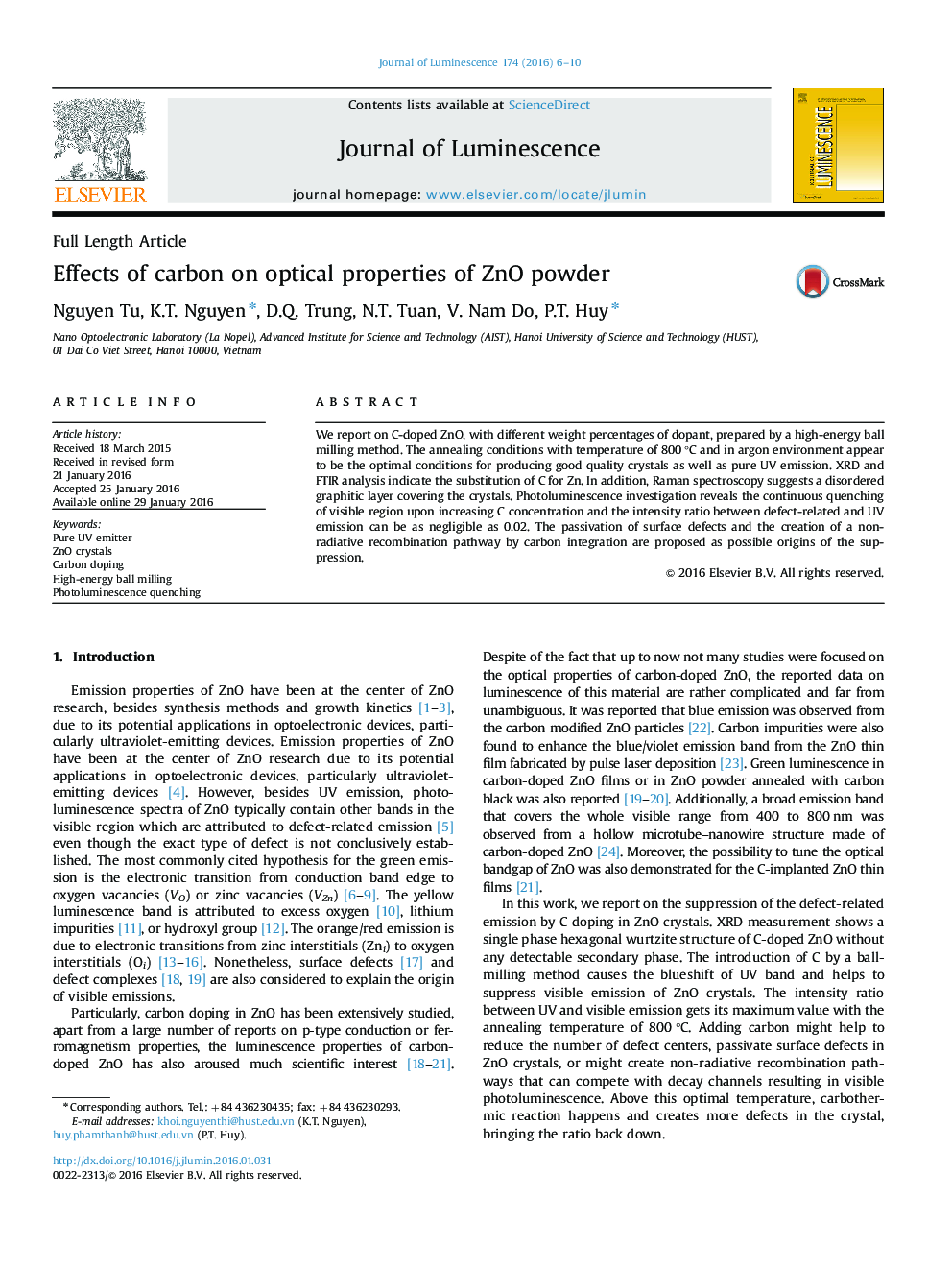| Article ID | Journal | Published Year | Pages | File Type |
|---|---|---|---|---|
| 5398479 | Journal of Luminescence | 2016 | 5 Pages |
Abstract
We report on C-doped ZnO, with different weight percentages of dopant, prepared by a high-energy ball milling method. The annealing conditions with temperature of 800 °C and in argon environment appear to be the optimal conditions for producing good quality crystals as well as pure UV emission. XRD and FTIR analysis indicate the substitution of C for Zn. In addition, Raman spectroscopy suggests a disordered graphitic layer covering the crystals. Photoluminescence investigation reveals the continuous quenching of visible region upon increasing C concentration and the intensity ratio between defect-related and UV emission can be as negligible as 0.02. The passivation of surface defects and the creation of a non-radiative recombination pathway by carbon integration are proposed as possible origins of the suppression.
Related Topics
Physical Sciences and Engineering
Chemistry
Physical and Theoretical Chemistry
Authors
Nguyen Tu, K.T. Nguyen, D.Q. Trung, N.T. Tuan, V. Nam Do, P.T. Huy,
